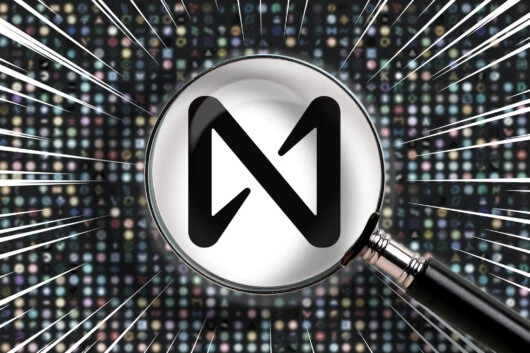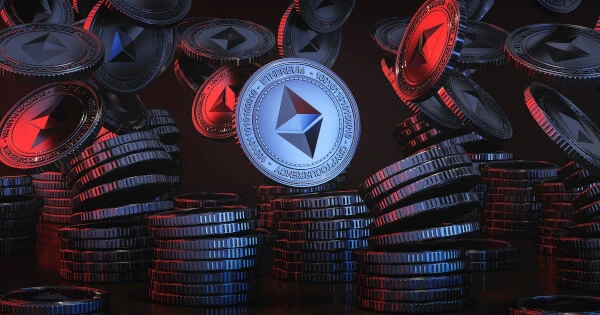Jul 18, 2023 12:25
Supply chains
are crucial to the global economy because they ensure the efficient movement of
commodities from manufacturers to consumers. Traditional supply chains, on the
other hand, are frequently plagued by inefficiencies, a lack of transparency,
and vulnerabilities.
Blockchain
technology has the potential to address these issues and improve supply chain
resiliency. In this post, we will look at how blockchain technology has the
potential to revolutionize supply chains by increasing transparency, boosting
traceability, and enabling more robust and sustainable supply chain networks.
Traditional
Supply Chain Difficulties
Traditional
supply chains are intricate networks comprising numerous parties such as
manufacturers, suppliers, distributors, and retailers. Despite technological
and logistical developments, traditional supply networks confront various
challenges:
Lack of
Transparency
Traditional
supply chains lack transparency, making it impossible for participants to trace
and verify the movement of items. This obscurity can generate delays,
disagreements, and difficulties in determining the fundamental causes of
problems.
Traditional
supply chains frequently rely on human processes and documentation, resulting
in delays, inaccuracies, and increased expenses. These inefficiencies can have
an influence on supply chain networks' overall responsiveness and
competitiveness.
Counterfeit and
fraud offer substantial dangers to supply chains, resulting in financial
losses, brand reputation damage, and potential customer injury. Traditional
supply networks struggle to recognize and mitigate these risks effectively.
Blockchain
Technology's Potential
Blockchain
technology, with its intrinsic properties of transparency, immutability, and
decentralized consensus, provides solutions to traditional supply chain
difficulties. Supply chain participants can use blockchain to:
Improve
Transparency and Traceability
Blockchain
allows for the construction of a shared, unchangeable ledger that records and
validates every transaction and movement of items. This transparency gives
participants real-time visibility into the whole supply chain, allowing them to
track and trace products from the point of origin to the point of sale.
Blockchain
reduces the need for intermediaries and manual processes, automating and
optimizing supply chain activities. Smart contracts, which are self-executing
agreements on the blockchain, can automate operations like payment settlement,
quality control, and compliance verification, decreasing administrative costs
and increasing efficiency.
Ensure
Product Authenticity
Blockchain
permits the development of non-fungible tokens (NFTs), which can be associated
with tangible objects. These NFTs act as digital authentication certificates,
making it easier to check the provenance and authenticity of products along the
supply chain.
Encourage
Trust and Collaboration
Due to its
decentralized and consensus-driven character, blockchain fosters trust among
supply chain actors. Participants can collaborate to authenticate information,
eliminate conflicts, and develop better relationships based on transparency and
trust by sharing a single ledger.
Supply Chain
Resilience Use Cases
Blockchain
technology is already being used in a variety of supply chain use cases,
demonstrating its potential to improve resilience:
Track &
Trace
Blockchain
allows for end-to-end product traceability, allowing participants and consumers
to confirm the authenticity and integrity of items. This is especially useful
in businesses like pharmaceuticals, where counterfeit products pose serious
risks.
Supply Chain
Finance
Blockchain-based
solutions that securely record and verify transactions between suppliers,
manufacturers, and financial institutions can help with supply chain financing.
This decreases the risk of fraud and enhances suppliers' access to credit.
Food Safety
and Quality Assurance
By tracing the
origin of food goods, monitoring temperature conditions during transportation,
and recording quality control processes, blockchain can assist improve food
safety. This allows for the earlier detection and mitigation of any foodborne
illnesses or quality issues.
Sustainability
and Ethical Sourcing
Blockchain has
the potential to improve sustainability efforts by giving transparent
information about environmental impact and ethical sourcing methods throughout
the supply chain. This allows consumers to make more informed purchasing
decisions and promotes ethical company operations.
Considerations
and Obstacles
While
blockchain technology has enormous potential in supply chains, various issues
and considerations must be addressed:
Scalability:
Because blockchain networks must manage a huge amount of transactions and data,
they might be difficult to scale. Blockchain technology improvements, such as
layer 2 solutions and interoperability standards, are solving scaling
challenges.
Interoperability
and Standards
The
implementation of industry-wide standards and interoperability between multiple
blockchain platforms are critical for the mainstream adoption of blockchain
technology in supply chains. In this context, collaboration among industry
players and standard-setting agencies is critical.
Data Privacy
and Security
It is vital to
protect sensitive supply chain data while also maintaining privacy. To protect
confidential information while maintaining openness, blockchain systems should
include strong encryption and access controls.
Compliance with
relevant legal standards, such as data protection and privacy legislation, is
required for blockchain installations. Collaboration is essential between
blockchain solution providers and regulatory agencies to ensure compliance and
handle any legal concerns.
The scalability
problem: the biggest hurdle to overcome?
Blockchain's
scalability problem arises from its inherent design, where every transaction is
stored and validated by all network participants. As the number of transactions
increases, the blockchain network's capacity becomes limited, leading to slower
transaction processing times and higher costs. This poses a challenge for
supply chains that require a high volume of transactions to be processed
quickly and efficiently.
Sharding
Sharding is a
technique that aims to address blockchain's scalability issue by dividing the
network into smaller, more manageable parts called shards. Each shard operates
as a separate blockchain with its validators, enabling parallel processing of
transactions.
The fact is that sharding
allows multiple transactions to be processed simultaneously across different
shards. This parallel processing significantly improves transaction throughput
and reduces congestion on the main blockchain network. As a result, supply
chains can handle a higher volume of transactions, facilitating real-time data
updates and seamless coordination among stakeholders.
Moreover, by distributing the
computational workload across shards, sharding reduces the resources required
to validate transactions. This efficiency translates into lower transaction
fees, making blockchain-based supply chain solutions more cost-effective for
businesses. Reduced costs enable wider adoption and encourage smaller
organizations to participate, leading to a more inclusive and interconnected
supply chain ecosystem.
Lastly, sharding provides a
scalable framework for blockchain networks, as each shard can handle a subset
of the total transaction load. As the number of shards increases, the network's
capacity grows exponentially. This added scalability ensures that blockchain
technology can support the expanding demands of supply chains without
compromising performance or transaction speed.
Additional strategies
for scalability
While sharding
shows great promise, other strategies can complement or extend its benefits for
supply chain scalability:
- Layer 2
solutions: Layer 2 solutions, such as payment channels or sidechains, offer
off-chain transaction processing. By conducting a bulk of transactions off the
main blockchain and only periodically settling them on-chain, these solutions
alleviate the burden on the main network, improving scalability and reducing
transaction costs.
- Consensus
mechanism optimization: Blockchain's consensus mechanisms, such as
Proof-of-Work (PoW) or Proof-of-Stake (PoS), can be optimized to enhance
scalability. For example, transitioning from PoW to PoS or adopting hybrid
consensus mechanisms can improve transaction throughput and reduce energy
consumption, enabling blockchain networks to handle a higher volume of
transactions.
- Interoperability
and standards: Standardization and interoperability among different blockchain
networks can enhance scalability by allowing seamless communication and
transaction exchange between disparate systems. This enables supply chain
participants to leverage the strengths of multiple blockchain networks while
maintaining data integrity and transparency.
Conclusion
Blockchain
technology has enormous potential for improving supply chain resilience by
increasing transparency, traceability, and efficiency. Supply chain actors can
solve traditional supply chain difficulties such as lack of transparency,
inefficiencies, and counterfeit concerns by embracing blockchain.
Collaborations among industry stakeholders, regulators, and technology
providers will be critical in enabling wider use of blockchain in supply chains
as blockchain solutions grow and acquire acceptance.
The use of
blockchain technology in supply chains has the ability to alter companies,
encourage sustainable practices, and ensure that customers receive safe and
authentic products. Supply chain networks that embrace blockchain can construct
more resilient and trustworthy systems, enabling a more secure and efficient
global economy.
This article was written by FM Contributors at www.financemagnates.com.
















